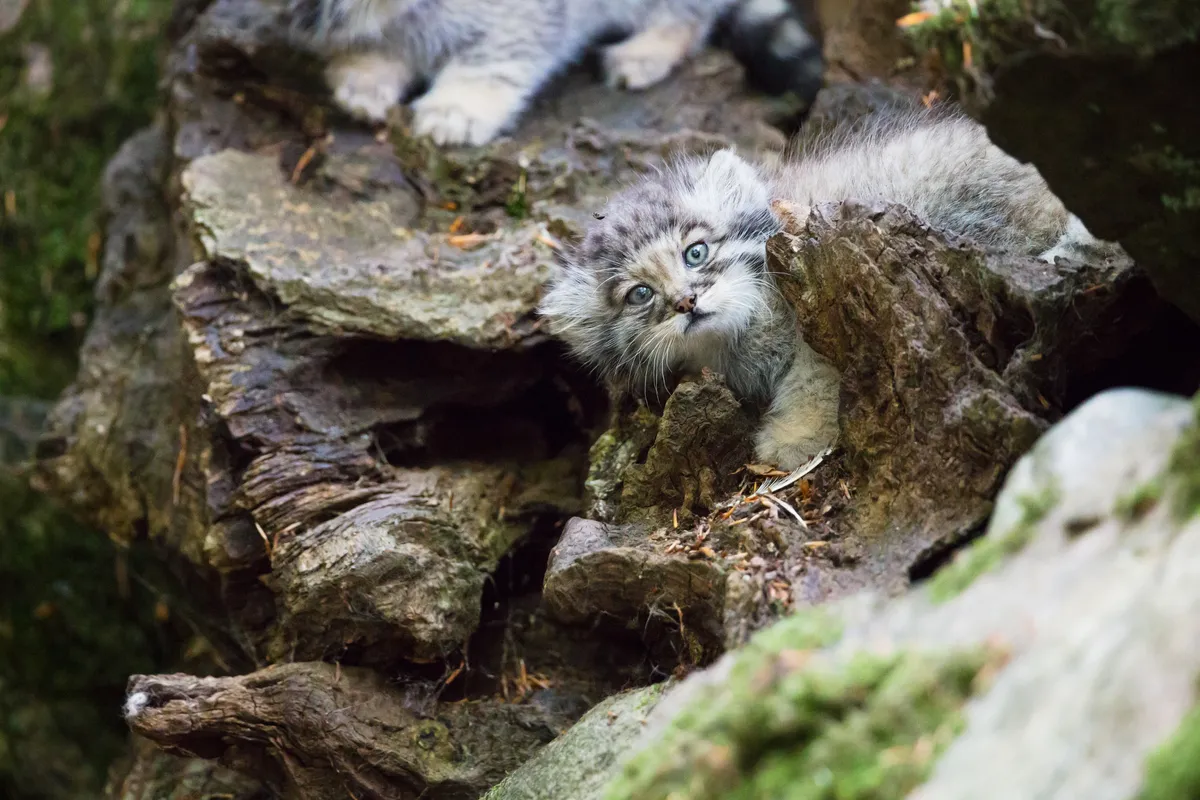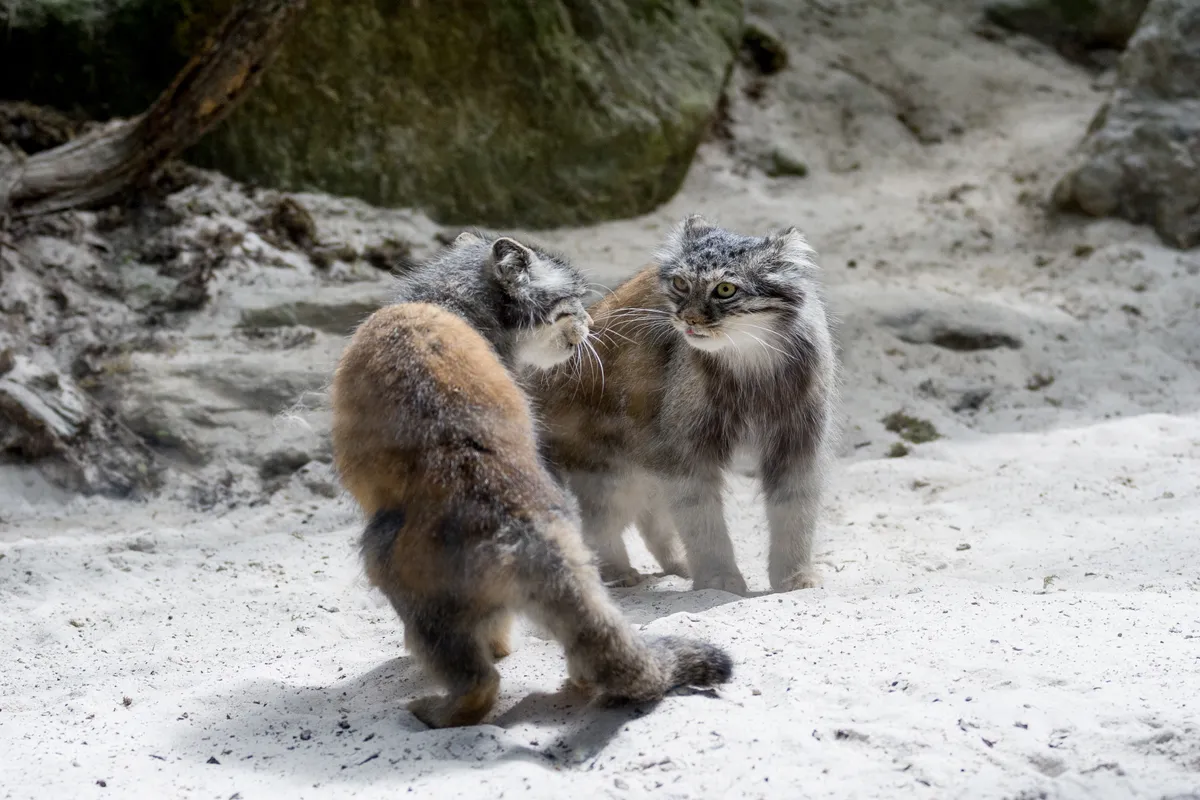Learn about the Pallas cat (Otocolobus manul), a resident of the Central Asian steppe that’s known as the grumpiest cat in the world owing to its rather pinched appearance. It features in BBC One's Frozen Planet II.
Its correct common name – Pallas’s cat – honours Peter Simon Pallas, the Prussian naturalist-explorer who first described the species for science in 1776. However, the term Pallas cat, is more frequently used when searching for information on the feline online. Therefore, this article refers to the species in this way throughout.
The Pallas cat is also known as the manul, steppe cat or rock wildcat.
Where is a Pallas cat from?
The Pallas cat has a wide but fragmented distribution across the grasslands and montane steppes of Central Asia, including Iran, Afghanistan, Pakistan and northern India. Mongolia and Russia make up the majority of its range today, with Pallas cats living at altitudes up to nearly 5,600m.
Where do Pallas cats live?
Pallas cats live in abandoned marmot burrows and rock cavities on steppes and grasslands. Their silvery or orangey-buff coloration provides the perfect camouflage in the terrain of this inhospitable, sparsely populated grassland region.
Where can you see captive Pallas cats in the UK?
Tull and Penelope, Cotswold’s Wildlife Park’s pair of Pallas cats, had a litter of two kittens in August 2022, the first ever born at the zoo. There are also Pallas cats at Port Lympne Safari Park, The Big Cat Sanctuary in Kent, and at Banham Biological Gardens in Norfolk.
How big is a Pallas cat?
A Pallas cat is 65–95cm long, from nose to the tip of its thick, bushy tail. The tail of a Pallas cat is around half the length of its body.
Please note external videos may contain ads:
How tall is a Pallas cat?
A Pallas cat stands 30-35 cm tall, its relatively short legs better suited to ambushes and short stalks than running. Its very thick fur coat, which keeps the animal warm in the freezing conditions of the Central Asian steppe, makes the Pallas cat appear much larger than it really is.
How is a Pallas cat adapted for a cold environment?
The Pallas cat’s flattened ears are protected from the cold by the same thick fur that covers the rest of its body, while its broad paws provide cold-protection and act almost like snowshoes. The Pallas cat can wrap its tail around its body for additional warmth.
The Pallas cat has a well developed nictitating membrane – also known as a third eyelid – that may be used to protect the eyes from extreme cold and dust storms.

How many kittens do Pallas cats have?
Pallas cats have litters of between one and six kittens, with three or four the most common number. Pallas cat kittens have a dark, woolly coat which they moult at around two months old. Kittens are independent by four to five months old.
Female Pallas cats only come into season for two to four days per year, with mating taking place between December and March, and kittens born 66- 75 days later, between late March and May. Pallas cats reach sexual maturity at around 9-10 months.
What do Pallas cats eat?
Pallas cats hunt for small prey including marmots, pikas, ground squirrels, voles, gerbils and hamsters. The steppe is home to some of the densest populations of small mammals on the planet. Ground-living birds, mainly sandgrouse, partridges and larks are also part of their diet.
When a Pallas cat is hunting (and when attempting to avoid predators) it engages in a behaviour known as ‘periscoping’, which involves repeatedly raising its head above the terrain behind which it’s hiding to check on the status of its quarry.
How long does a Pallas cat live for?
Pallas cats can live to around eight years old in the wild, though the oldest recorded captive individuals lived to 12 years old. They have a high mortality rate, with 68% of Pallas cat kittens not surviving to the point of being able to establish their own territory.
What are the predators of the Pallas cat?
Eagles and other raptors, grey wolves, herding dogs and red foxes. They are also hunted by humans for their pelts, mainly in Mongolia, where hunting is legal (they can also be hunted in China if a special licence is obtained). Many Pallas cats are also shot accidentally when mistaken for marmots, which are hunted in most of the Pallas cat’s range. The fat and organs of Pallas’s Cats are used as medicine in Mongolia and Russia.

What are the threats facing the Pallas cat?
The main threats facing the Pallas cat are habitat degradation and fragmentation. These are mostly consequences of increasing livestock numbers, conversion of steppe grasslands into arable land, infrastructure development and resource extraction.
Hunting is also a serious threat, with Pallas cats killed for their pelts and for medicine, as well as accidentally when mistaken for marmots.
How many Pallas cats are left in the wild?
It is hard to establish figures for the number of Pallas cats in the wild because they are distributed so widely and live at such low population densities across their range. But the IUCN estimates a population of approximately 58,000 mature Pallas cats. The species is currently listed as of Least Concern on the IUCN Red List of Endangered Species, despite the fact that the population is in decline.
Main image: Pallas cat lives in the cold and arid steppes of central Asia. © kjekol/Getty
